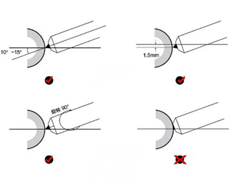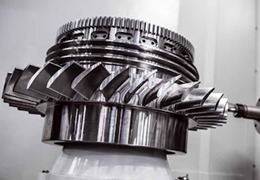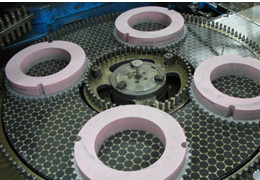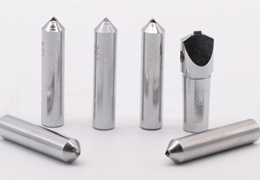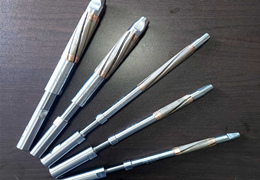In recent years, the rapid development of CNC grinding machines has also led to a qualitative leap in punch grinding manufacturing technology, with significant improvements in product quality, productivity and flexibility. Nowadays, some punch manufacturers have begun to use 5-axis grinding machines, which are not only capable of manufacturing complex metal cutting tools, but also can easily produce and manufacture punches in various forms and connect these machines to automated “smart factories”, which can effectively improve production flexibility and significantly reduce management costs, especially for customers with small batch production. This is especially beneficial for customers with small batch production.
More Super Hard Hexagonal Punch Grinding Machine SOD31 Grinder
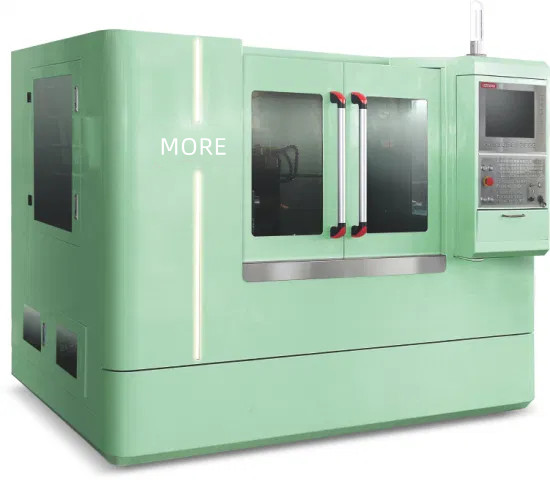
Adaptable to a variety of shapes/high efficiency
Special-shaped punch/special-shaped mold/
polygon/ellipse/CAM and other complex
polyhedral coordinate grinding models
Hexagonal Punch Grinding Machine
The hexagonal punch grinding machine is an essential tool in precision machining, known for its capability to produce high-quality, hexagon-shaped punches used in various industrial applications. This specialized machine is designed to grind hexagonal profiles with exceptional accuracy, ensuring that each punch meets stringent dimensional and surface finish requirements. Below, we explore the key features and applications of the hexagonal punch grinding machine.
Key Features of Hexagonal Punch Grinding Machine
1.Precision Grinding Capabilities: The hexagonal punch grinding machine is equipped with advanced grinding technology that allows for the production of precise hexagonal profiles. This precision is crucial in industries where the accuracy of punches directly affects the quality of the final product.
2.High-Speed Spindle: A high-speed spindle is a critical feature of this machine, enabling it to perform grinding operations with high efficiency and minimal tool wear. The spindle speed can be adjusted to match the material properties and desired finish, ensuring optimal performance.
3.Automated Control Systems: Modern hexagonal punch grinding machines are often equipped with CNC (Computer Numerical Control) systems, allowing for automated and highly accurate grinding processes. These control systems enable operators to program complex grinding paths, ensuring consistency across multiple production runs.
4.Versatility in Material Handling: The machine is designed to handle various materials, including high-speed steel, carbide, and other hard metals commonly used in punch manufacturing. This versatility makes it suitable for a wide range of applications across different industries.
5.Customizable Grinding Angles: The machine allows for the customization of grinding angles to produce punches with varying degrees of sharpness and durability. This flexibility is essential for meeting specific requirements in different applications, such as forming, cutting, or stamping.
6.Robust Construction: Built with a rigid and durable frame, the hexagonal punch grinding machine can withstand the stresses of continuous operation. This robust construction ensures long-term reliability and minimal maintenance, even in demanding production environments.
Applications of Hexagonal Punch Grinding Machine
1.Metal Stamping: One of the primary applications of hexagonal punches is in metal stamping, where they are used to create precise hexagonal holes or shapes in sheet metal. The accuracy and durability of the punches produced by the hexagonal punch grinding machine are critical for maintaining the quality of stamped parts.
2.Forming and Shaping: In industries such as automotive, aerospace, and electronics, hexagonal punches are used in forming and shaping processes. The ability to produce punches with specific hexagonal profiles allows manufacturers to create complex parts with tight tolerances.

3.Cutting Tools: Hexagonal punches are also used as cutting tools in various industrial applications. The sharpness and precision of the punches produced by the grinding machine are essential for achieving clean cuts and extending the tool's lifespan.
4.Fastener Manufacturing: In the production of hexagonal fasteners such as bolts and nuts, the hexagonal punch grinding machine plays a crucial role. The machine ensures that the punches used in forming these fasteners are of the highest quality, contributing to the reliability and strength of the final product.
5.Injection Molding: Hexagonal punches are sometimes used in injection molding processes to create hexagonal features in plastic or composite parts. The grinding machine's ability to produce highly accurate punches ensures that the molded parts meet precise specifications.
6.Precision Engineering: In precision engineering applications, hexagonal punches are used in a variety of custom tooling and machining operations. The versatility and accuracy of the hexagonal punch grinding machine make it an indispensable tool in this field.
Expert in Non-circular Workpiece Grinding
--Strong grinding force, high processing efficiency can greatly reduce the cost of irregular grinding.
--Excellent imported linear motor and torque motor applications, running more stable, accuracy can be maintained for a long time.
--Customized control system makes the operation more simple and efficient in irregular grinding.
--Through no backgap high speed and high precision feed. due to the direct drive of the workpiece head frame
Machining diameter range
|
Ø5~Ø300mm
|
Working length
|
150mm
|
Maximum stroke of X axis
|
370mm
|
Maximum z-axis stroke
|
270mm
|
Spindle speed of grinding
wheel
|
50~3000rpm
|
Minimum X/Z axis feed unit
|
0.001mm |
More Super Hard Hexagonal Punch Grinding Machine SOD31 Grinder Note:
Expiry Druation: Two Month.
MOQ: 1 set
Payment Term: T/T, PayPal, Western Union
Shipping Term: TNT, DHL, FedEx, EMS, UPS,Sea transportation, etc.



